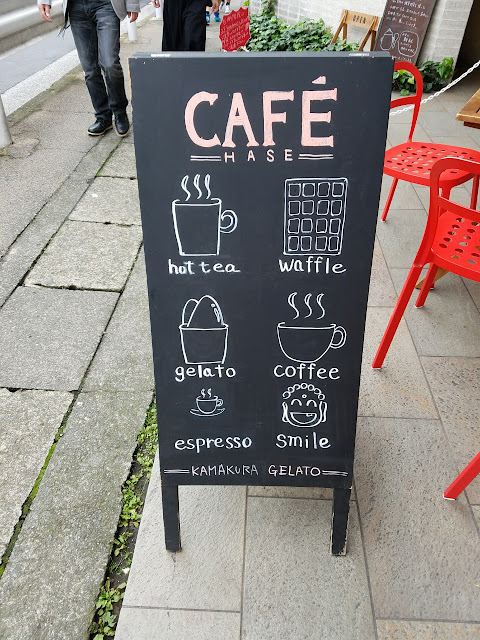Edit 3 October 2019: J-World Tokyo has been permanently shut down. It has now been replaced by Mazaria, a virtual-reality indoor theme park. Many of its activities are transplanted from VR Zone Shinjuku, which has, itself, also closed for good. More information on Mazaria: (English) (Japanese)
Previously on Sekai Ichi, I showed you around the Ikebukuro district in northwestern Tokyo. I ended that article on a preview of J-World Tokyo, the first indoor theme park based on the manga comics of Shonen Jump magazine, so that's where we shall pick up from.
Of the many series Shonen Jump has published over the years, the main focus of J-World is on its "big three": Dragon Ball, One Piece, and Naruto. You might see some of their main characters chatting it up in the lobby. such as the cast of One Piece here (from left to right: Sanji, Nami, Luffy, Usopp, and Brooks). I didn't, however, see that many guests in the park. It was a weekday evening, so entry was discounted and I'm sure the kids were out of school, but for some reason they weren't coming here... Ah well, I'll still take that over too many people at Tokyo DisneySea.
The first of three worlds I discovered was the One Piece world. One Piece (ワンピース, Wan Pīsu) is the story of Monkey D. Luffy, a boy who has the power to stretch his limbs like rubber, and puts together a crew of pirates to fund a treasure called the "One Piece". Its volumes have sold 350 million copies worldwide, making it the world's best-selling manga series.
Entrance to the Dragon Ball world. Dragon Ball (ドラゴンボール, Doragon Bōru) is the story of Goku, a martial-arts trainee caught in a quest to collect seven Dragon Balls, which summon a wish-granting dragon when assembled. At first, it was inspired by the classical Chinese tale Journey to the West, but before long grew into its own idiom. It's the oldest of the big three, first published in 1984, but you could say it's the most popular, especially in North America.
One of the attractions here has guests "collecting" the Dragon Balls by completing mini-games. When you queue up for these attractions, you will be let in three or four at a time, and must wait for the previous party to finish before being let in. Many of them require instructions given in Japanese, but the attendants will lend you guide books with translations in English, Chinese, or Korean.
Entrance to the Naruto world. Naruto (ナルト) is the story of Naruto Uzumaki, a ninja trainee imbued with the power of a demon-fox spirit. The main attraction here is a sort of puzzle-maze, similar to the one I did in the Dragon Ball world. What was unique about this one was that since it relies on instructions and clues spoken in Japanese, we were given earphones that repeated the instructions in our desired languages.
The food court sells various dishes inspired by various Jump characters. You can even see them on the banners above, chowing down on their own favourite foods!
There's also a re-creation of the Ichiraku Ramen shop from Naruto. Ramen is, by far, the title character's favourite food.
This corner is dedicated to Haikyuu!! (ハイキュー!!, Haikyū!!), a comic/show about a high school volleyball team...
...and this one for Kuroko's Basketball (黒子のバスケ, Kuroko no Basuke), about a high school basketball team. Sports series seem to be doing well these days, because they manage to attract both male and female fans, the latter by the presence of all those pretty athletic boys...
...I'm sorry, where was I? Oh yeah, signing off. But before I say good night, time to go Super Saiyan! Okay, I didn't get that far, but you might accomplish something to that effect. Just last week, they launched a new service where you can rent costumes and cosplay as your favourite Jump characters! Plans start at ¥3,500 for 90 minutes. More information: (Japanese)
Welp, nighty-night for now. I'll be back tomorrow with another installment of Know Your Trains, and then it's time to strike out for the Fuji Five Lakes. All that next time on Sekai Ichi!
J-World Tokyo has been permanently shut down.
Address: Sunshine 60 3F, 3-1 Higashi-Ikebukuro, Toshima-ku, Tokyo 〒170-0013
Access: 10 minutes on foot from the East exit of Ikebukuro Station (JR Yamanote (JY), Saikyo (JA), Shonan-Shinjuku (JS), Tokyo Metro Marunouchi (M), Yurakucho (Y), Fukutoshin (F), Tobu Tojo (TJ), and Seibu Ikebukuro (SI) lines).
From Shinjuku Station, take the Saikyo line to Ikebukuro (JA12, 5 minutes, ¥160). The Yamanote line is slower (JY13, 9 minutes), but more frequent. From Tokyo Station, take the Marunouchi subway line (M25, 16 minutes, ¥200).
Directions: From Sunshine 60's underground entrance in front of Tokyu Hands (see the previous article for more info), continue down the main walkway. After you pass the Fountain Plaza, go up the escalators until you reach the third floor. J-World Tokyo will be directly behind you.
Website: (English) (Japanese)
From Shinjuku Station, take the Saikyo line to Ikebukuro (JA12, 5 minutes, ¥160). The Yamanote line is slower (JY13, 9 minutes), but more frequent. From Tokyo Station, take the Marunouchi subway line (M25, 16 minutes, ¥200).
Directions: From Sunshine 60's underground entrance in front of Tokyu Hands (see the previous article for more info), continue down the main walkway. After you pass the Fountain Plaza, go up the escalators until you reach the third floor. J-World Tokyo will be directly behind you.
























































